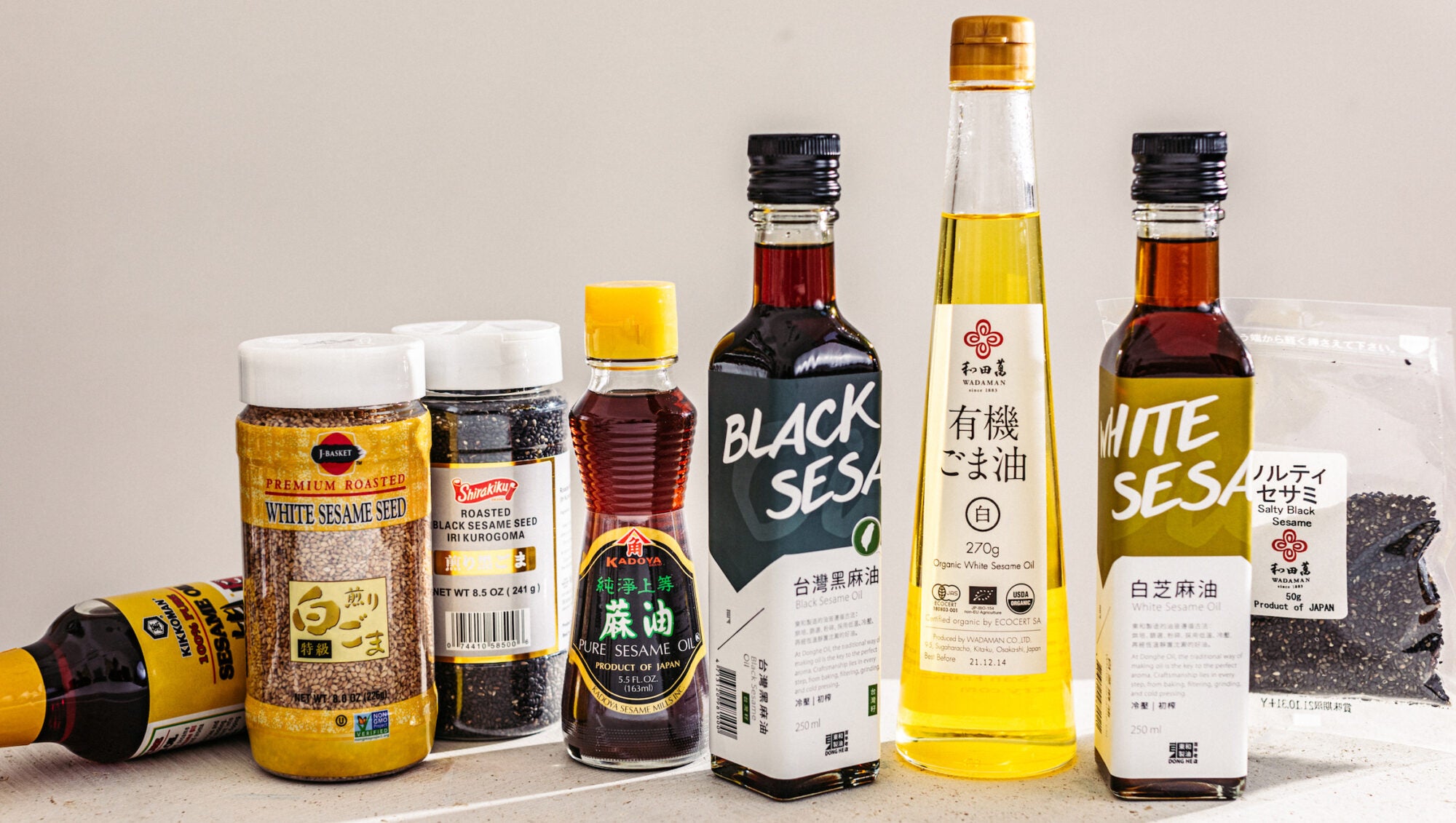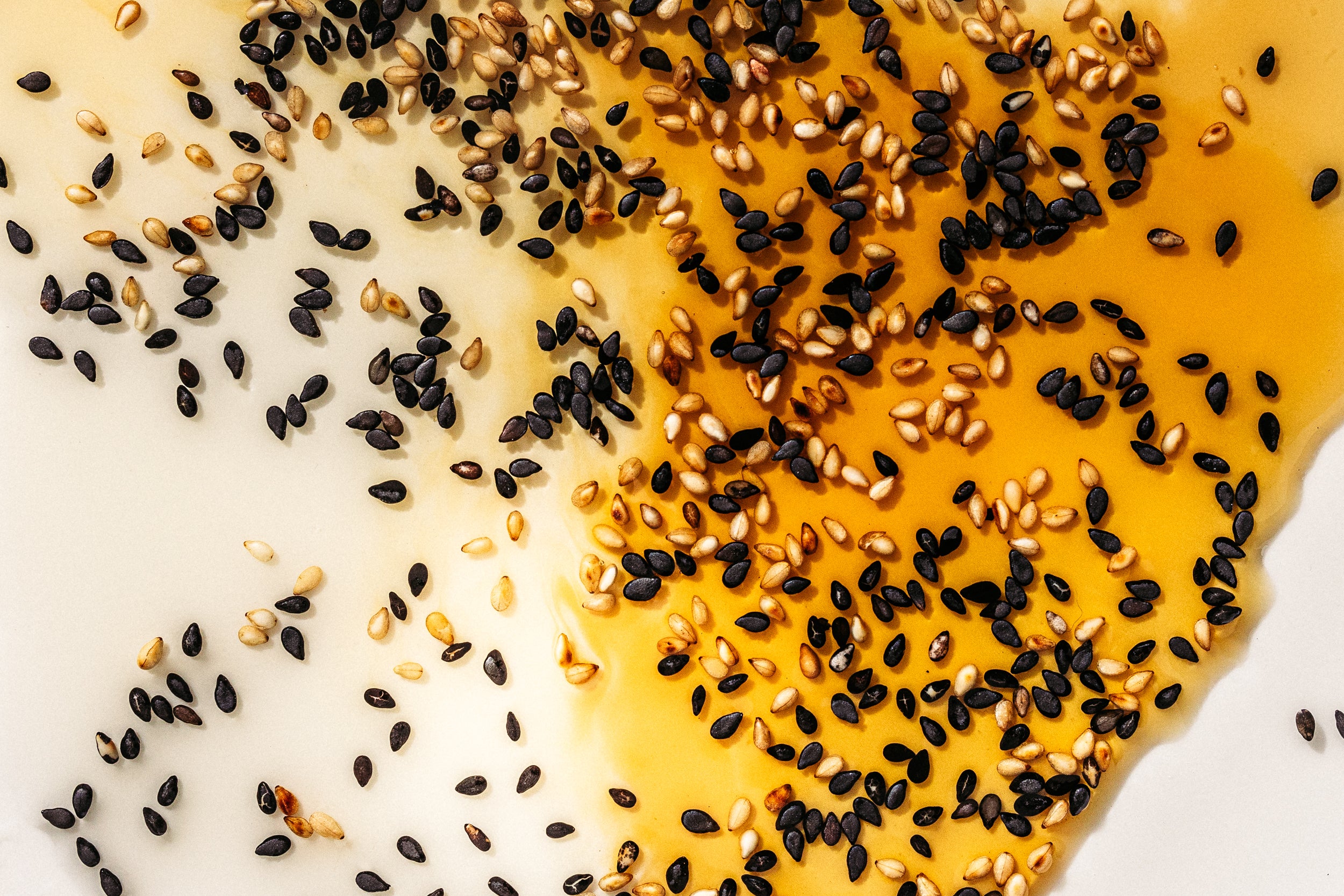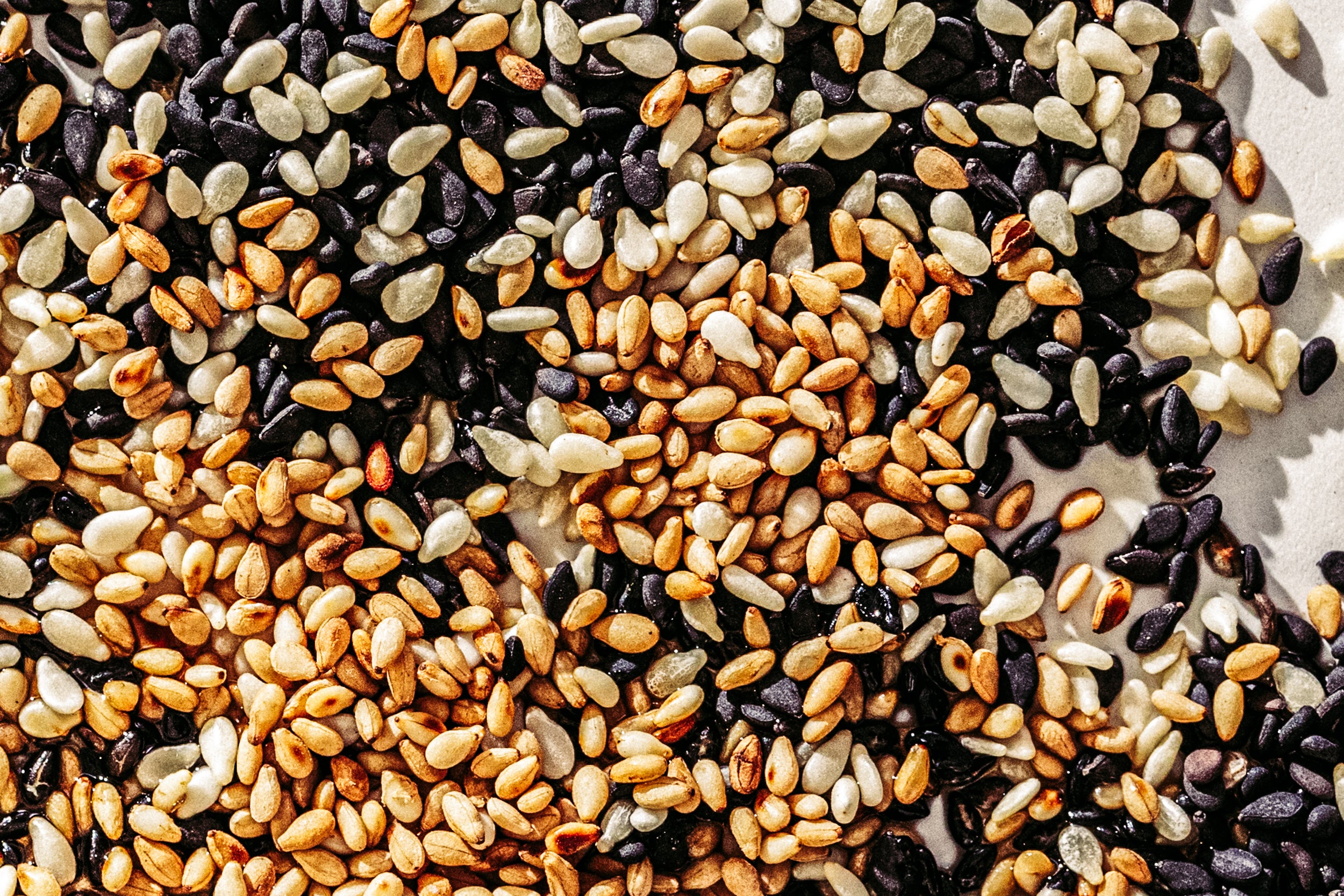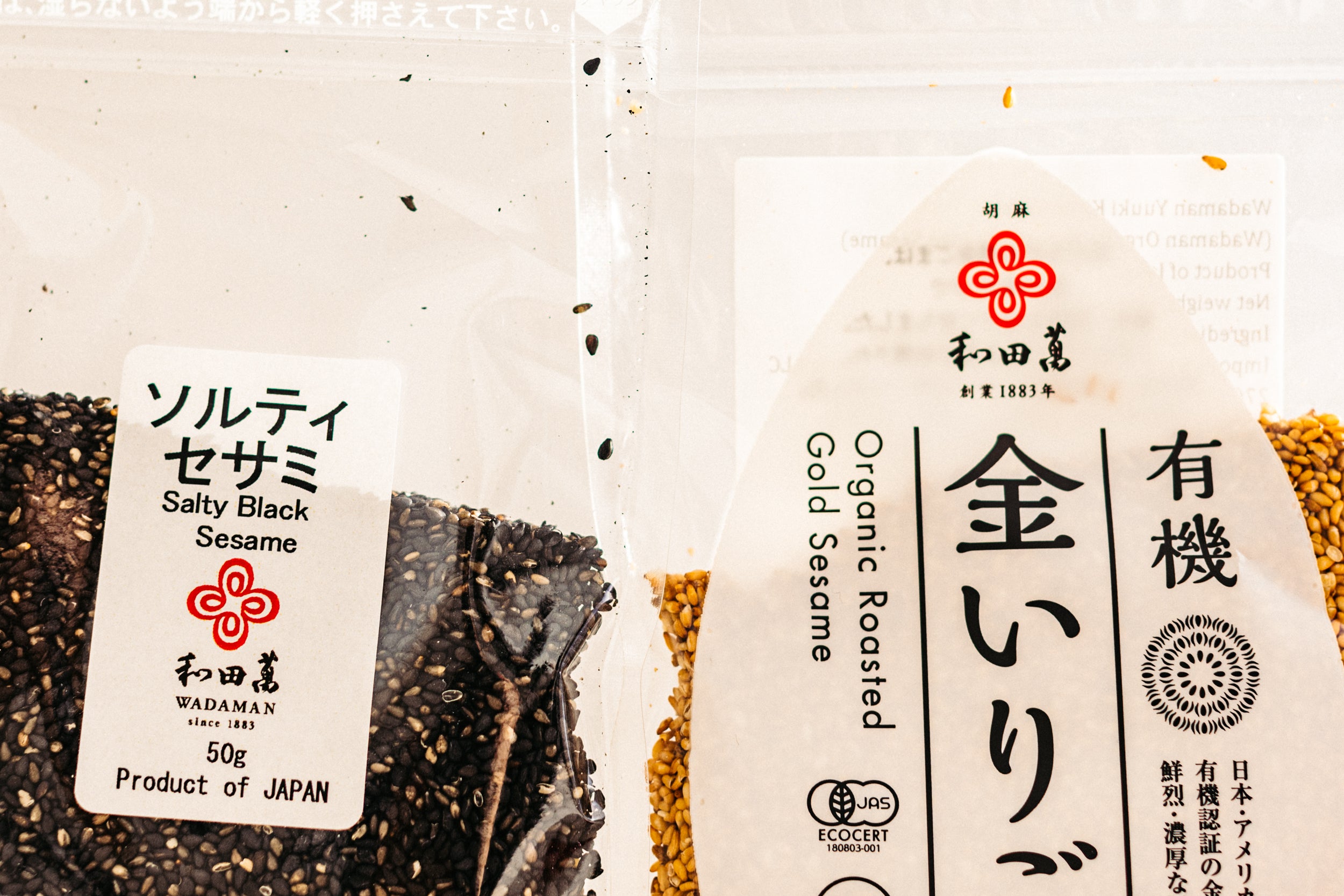
Depending on what you buy, the nutty oil can bring a whole world of nuance to your cooking.
Years ago, a non-Asian chef shared a “secret” for cooking “Asian food”: toasted sesame oil. He wasn’t all wrong. If soy sauce—in all its forms—is the salt of East Asian pantry staples, toasted sesame oil might be the black pepper. The fragrant, amber-colored oil is a critical element in shaping a great number of savory dishes—find it drizzled over steamed whole fish, marinated into chicken, dressing cucumbers, and finishing any stir-fry or noodles you can fashion. And, while it may be a lazy hack for recipe developers looking to anoint a dish “Asian,” toasted sesame oil does have a transformational effect, imbuing dishes with an unmistakable nutty aroma.
Yet stroll through an average grocery store—even the almighty American Asian supermarket—and you’ll only find a sparse few options for toasted sesame oil. This is a shame, because there’s a huge variety of sesame oil quality and type—due to the different processing methods, seed types and origins, and toasting levels used. And for some chefs, there’s no substitute for high-quality sesame oil.
“Cheaply processed sesame oil may have a strong scent, but it will have a bitter flavor, and the scent will disappear quickly. Properly made sesame oil will have a delicious, sweet, and nutty aroma that comes from the toasted sesame seeds, and none of the bitterness,” says Hooni Kim, chef-owner of the Michelin-starred Danji and author of My Korea.
Kim says he has heard of some companies that simply add artificial smoke flavor to untoasted white sesame seed oil, or that use infrared technology to roast the seeds, which doesn’t bring out the same flavor as more labor-intensive methods. Traditional toasted sesame oil making is done in small batches to ensure that the seeds toast more evenly—a highly skilled process that few producers nowadays still practice. Because of this, Kim feels that splurging on a bottle of sesame oil upward of $30, like Nonghyup, is well worth it. But he says that, if you can’t find it, Kadoya and Sempio make acceptable mass-produced oils.
Grace Huang and her family have been making sesame and peanut oil the slow and hard way at Dong He, their 100-year-old mill in Chiayi, Taiwan. Huang is a fourth-generation manager of the company, which her great-grandparents took over from a Japanese business during Japan’s occupation of Taiwan. They follow the same mechanical process, involving wheels of ground seeds that are stacked together and squeezed, that has been in place since the early 1900s, at which time it was considered technologically advanced.
Bigger brands often use an extraction process with a chemical solvent, says Huang, and these mass-produced oils are heated to 100 degrees Celsius (212 degrees Fahrenheit) in the process, which diminishes the flavor as well as the nutritional quality of the resulting oil. At Dong He, the seeds are pressed slowly at a low temperature to maintain their natural aroma—a process similar to making cold-pressed olive oil, only the sesame seeds are roasted for a variable length of time over a wood fire before being pressed.
“The longer you’ve been roasting the seeds, the more experienced you are, and the better you will be at judging if it’s ready to be pressed into oil,” says Huang.
Whereas bigger, modern producers use gas ovens to roast sesame seeds, the wood fire lends nuance as well: “If you barbecue with charcoal, then it tastes different than with gas . . . It’s kind of the same thing,” says Huang.
Then there’s the type of sesame seeds used. Dong He produces both toasted white and toasted black sesame seed oils. Black sesame seed oil has a richer, stronger taste, suitable for heavier dishes like stews and braises, whereas white sesame seed oil is lighter and smoother—great for salads, dipping sauces, or drizzling atop soups, says Huang. Black sesame oil is more strongly associated with warming energy in traditional Chinese medicine, used in dishes meant to be restorative during the winter like Three Cup Chicken, or for women who have recently given birth, like the Taiwanese stew Ma You Ji, or Sesame Oil Chicken Soup.
Huang also says that the flavor of black sesame seeds differs depending on where they are grown; Dong He has worked with the same farmers in Taiwan and Thailand to source their black sesame seeds for decades, and they sell one bottle of single-origin Taiwanese black sesame oil. The white sesame seeds they procure are all from Thailand, because there are no longer any farms that grow them in Taiwan—this, much like cold-pressing the oil, is just not as profitable as it used to be.
Sesame seed oil used to be a much more common cooking oil in not just Taiwan but all around the world. It is thought to be one of the oldest seed oils used for cooking, with evidence of its use in ancient Egypt—the annual plant originated in Africa. Comprised of 50 percent fat, the resulting oil from pressing sesame seeds is rich in vitamin E and B vitamins, among other nutrients. Sesame seeds spread from Africa to Europe and Asia, where they have been cultivated for thousands of years. They eventually traveled over to the Americas through the slave trade; a variety of sesame known as benne was grown in slaves’ gardens and served as a vital source of protein and nutrients. Benne seeds are still used in the cooking of Gullah Geechee communities.
In East Asia, the spread of Buddhism around 50 CE is often credited with accelerating the use of sesame seeds and oil for culinary purposes—for those submitting to a vegetarian diet, it served as a vital source of protein and nutrients. In Japan, sesame oil was also used for lamps and, much later on, to make fried foods, says Marc Matsumoto, culinary creator of No Recipes. Battered and fried vegetables, tempura, were introduced to Japan through Portuguese missionaries during the 16th century, and they were made primarily with sesame oil.
“It’s worth noting that the sesame oil used in Japan historically was extracted from lightly roasted sesame seeds,” says Matsumoto. Hence, the flavor wasn’t a huge factor, as with more darkly roasted sesame oils. Nowadays, all-purpose cooking oil is made from other crops, so it’s much more common to find only dark roasted sesame oil in Japan rather than lighter types.
In European and American cuisines, sesame seed oil is typically made with untoasted seeds, resulting in a more neutral-tasting, all-purpose cooking oil. It’s easy to distinguish from Asian toasted sesame seed oils by its color, which is pale yellow. The seeds themselves—dotting rolls, bagels, or cookies—might be more popular than the oil these days, however.
In the United States, a rotating cast of cheaper and cheaper commodity crop–based oils, including corn, soybean, sunflower, safflower, and canola (made from rapeseed), have made it less lucrative to produce and thus harder to find other cooking oils that were once more common, such as peanut and sesame. These industrially produced oils have had a detrimental effect on our health, according to nutritionists—not because of the type of plant used but because of the high-heat processing methods, which lead to the oils becoming oxidized, says Kristin Lawless, a certified nutrition educator and the author of Formerly Known as Food: How the Industrial Food System Is Changing Our Minds, Bodies, and Culture. “Seed and vegetable oils are especially prone to oxidation because they are mostly polyunsaturated fats, which are less stable than saturated fats,” says Lawless.
If soy sauce—in all its forms—is the salt of East Asian pantry staples, toasted sesame oil might be the black pepper.
But the biggest oil story of the last half-century has been olive oil. The Mediterranean oil is esteemed for its relative health benefits, touting antioxidants and heart-healthy fats. And it’s highly prized for its flavor—which varies greatly. Prices for a bottle of olive oil can range nearly as much as those for wine, and the typical American supermarket’s shelves heave with options. There are those top-shelf, flavorful olive oils that you wouldn’t want to use for cooking but for drizzling, to retain their full flavor; and there are those you’d use for cooking just about anything, Mediterranean cuisine or not. In fact, walk into an Asian supermarket, and you’ll likely find olive oil on its shelves; Asian Americans use it for everyday cooking, too.
Sesame oil might be thought of similarly—at least with a more open-minded future. Its full range is becoming more available in the United States, thanks to e-commerce retailers for Asian pantry goods, like Yun Hai, which imports Dong He oils, and Umami Insider, which stocks sesame oil from Kuki, a manufacturer that has been making oils according to the same traditional methods since 1886 in Yokkaichi, Japan.
You might not see the words “cold-pressed” on too many bottles of sesame oil, but you’d be hard-pressed to find an olive oil in today’s supermarket that isn’t “extra virgin,” meaning that the oil is extracted without the use of chemicals or high heat. Yet the same principles apply for both types of oil when it comes to the healthfulness and flavor of mechanically cold-pressed oils versus those made with faster, less traditional methods. Kuki has taken the steps to certify some of its production standards, achieving the international food safety and management certifications ISO 22000 and FSSC 2200. There may be no current equivalent of a DOP (Protected Designation of Origin), often used to convey provenance and signal quality when it comes to extra-virgin olive oil producers. But for many home cooks and chefs of East Asian cuisines, it takes little guesswork to know when you’ve found a good sesame oil.
“Choose toasted sesame oil with a light brown color, and check out the expiration date. It should smell strong and have a full, nutty aroma,” says Maangchi, the YouTube star and author of, most recently, Maangchi’s Big Book of Korean Cooking.
Kim says that it makes sense to stay loyal to a specific brand, as the strength of flavor and aroma can be such a personal preference. As long as a sesame oil is made using traditional, slow, and cold-pressed methods, it should be delicious, he says.
“Knowing how much it should cost for properly processed sesame oil, anything sold for less than $15 for a 250ml bottle is suspicious.”
Shelve It explores the world of groceries, from the fluorescent-lit aisles to the nooks and crannies of your cupboard. We dive into why certain ingredients got pantry staple status, the connection between cookbooks and buying habits, the online-ification of grocery shopping, and what gets shelved along the way.


